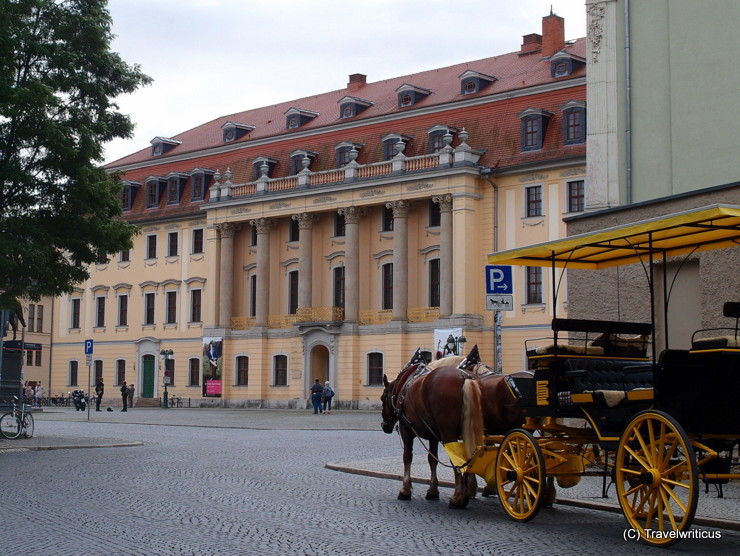
The Fürstenhaus in Weimar is a building with much history. Planned as a site for an authority, it turned into the residence of a Duke. After hosting a series of parliaments, it houses the “University of Music FRANZ LISZT Weimar” today.
Fürstenhaus in Weimar
The planned purpose was to house the local fiscal authority. However, after its completion in 1774, the building turned quickly into the residence of Duke Carl August. His original palace, the Weimarer Stadtschloss, had burned down in that year. So, there was an urgent need for a new representative home.
From 1848 upwards, the building hosted the parliament of the Duchy of Saxe-Weimar-Eisenach (until 1918), respectively of the Free State of Saxe-Weimar-Eisenach (until 1920).
Starting in 1920, the Landtag of the newly formed Free State of Thuringia found its home in the Fürstenhaus. As a result of the abolition of democratic structures in Nazi Germany, the Landtag has been terminated in 1934.
University of Music FRANZ LISZT Weimar
In 1951, the Fürstenhaus became the main building of the Hochschule für Musik FRANZ LISZT Weimar (University of Music FRANZ LISZT Weimar). Carl Müllerhartung, a student of Franz Liszt, founded this university in 1872. That way, he followed the recommendations of the great master, who spent many years in Weimar.
Composer Franz Liszt in Weimar
If you would like to learn more about the composer Franz Liszt, one of his former homes – the Liszt House – is now a museum and a site of the Klassik Stiftung Weimar.